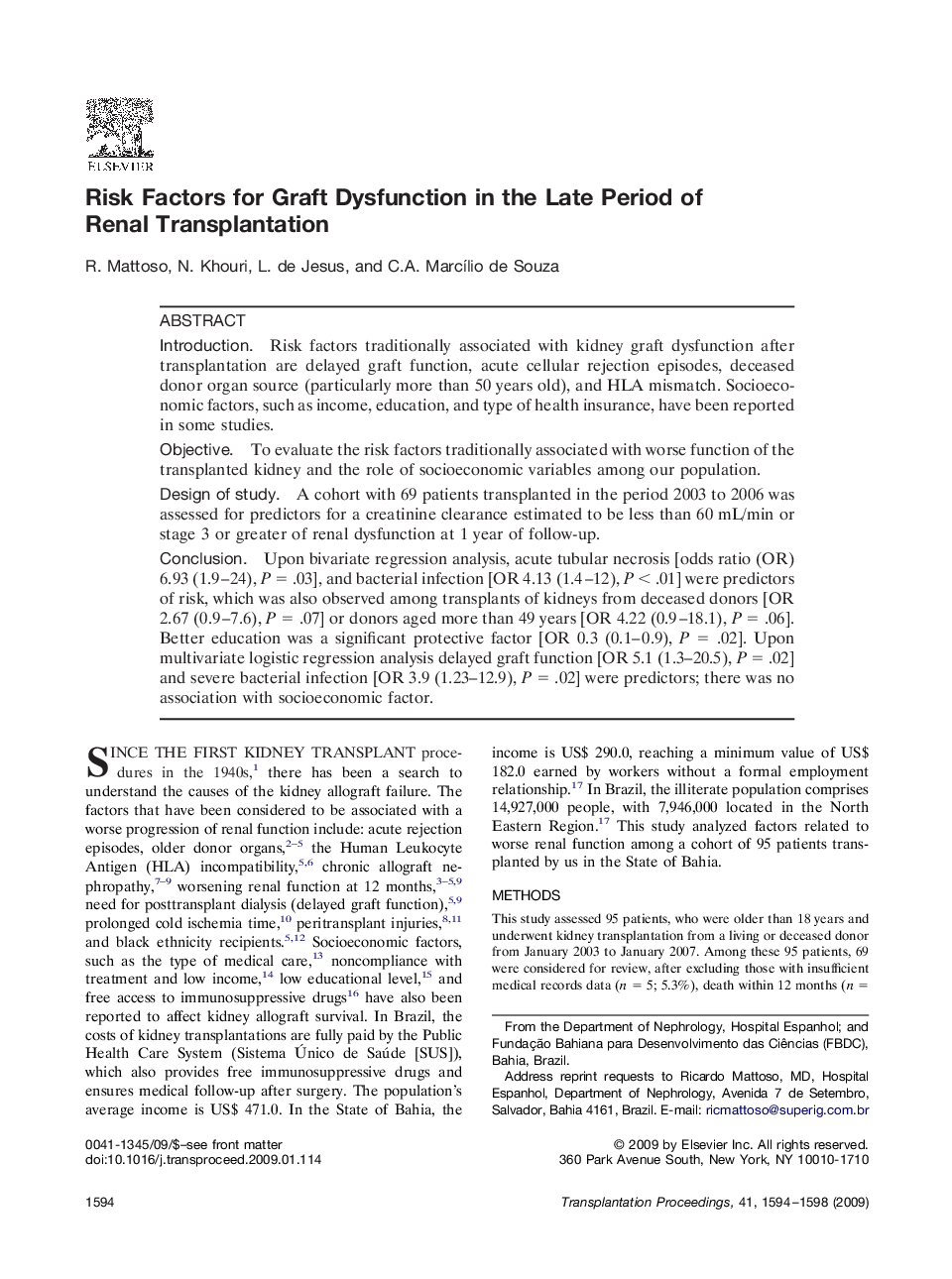| Article ID | Journal | Published Year | Pages | File Type |
|---|---|---|---|---|
| 4259245 | Transplantation Proceedings | 2009 | 5 Pages |
IntroductionRisk factors traditionally associated with kidney graft dysfunction after transplantation are delayed graft function, acute cellular rejection episodes, deceased donor organ source (particularly more than 50 years old), and HLA mismatch. Socioeconomic factors, such as income, education, and type of health insurance, have been reported in some studies.ObjectiveTo evaluate the risk factors traditionally associated with worse function of the transplanted kidney and the role of socioeconomic variables among our population.Design of studyA cohort with 69 patients transplanted in the period 2003 to 2006 was assessed for predictors for a creatinine clearance estimated to be less than 60 mL/min or stage 3 or greater of renal dysfunction at 1 year of follow-up.ConclusionUpon bivariate regression analysis, acute tubular necrosis [odds ratio (OR) 6.93 (1.9–24), P = .03], and bacterial infection [OR 4.13 (1.4–12), P < .01] were predictors of risk, which was also observed among transplants of kidneys from deceased donors [OR 2.67 (0.9–7.6), P = .07] or donors aged more than 49 years [OR 4.22 (0.9–18.1), P = .06]. Better education was a significant protective factor [OR 0.3 (0.1–0.9), P = .02]. Upon multivariate logistic regression analysis delayed graft function [OR 5.1 (1.3–20.5), P = .02] and severe bacterial infection [OR 3.9 (1.23–12.9), P = .02] were predictors; there was no association with socioeconomic factor.
